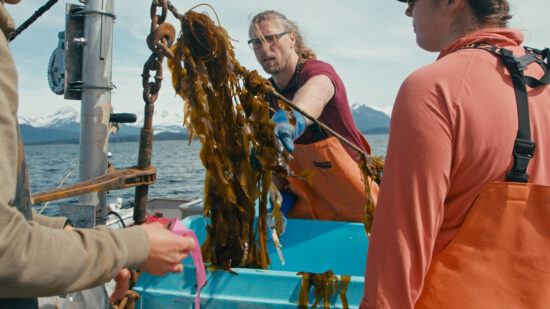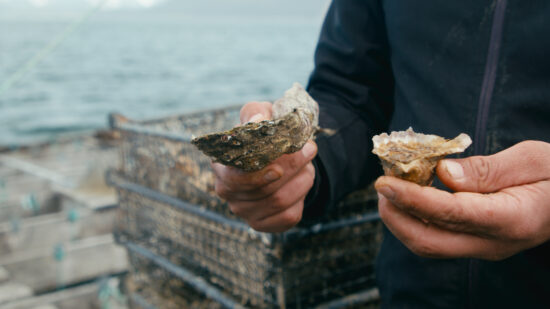
As part of the Alaska Mariculture Cluster grant project, Southeast Conference contracted with Hatch Innovation Services to create an open-source Alaska Mariculture Insights platform for seaweed and oysters to provide valuable information as new people, investors, and suppliers engage with this growing industry. Over 12 days in May 2024, Hatch visited mariculture farms and facilities in Ketchikan, Craig, Naukati, Hoonah, Juneau, Seward, Homer, Halibut Cove, and Kodiak. Join us in exploring the opportunities that lie beneath the surface.
Leveraging Alaska's unique strengths for Mariculture growth
- One of the most advanced support ecosystems
- Strong research - industry collaboration
- Indigenous leadership and communities involvement
- Entrepreneurial ingenuity in navigating Alaska’s unique conditions
- Synergy with the established fishing industry
- Diversification and integration strategies
- Passionate and extremely skilled human capital
Interactive Alaska Mariculture Partners database
Dive into the Alaskan ecosystem featuring all relevant partners contributing to the industry's success.
Use full-screen mode for a better view, and the “Map Guide” and i icon to learn how to engage with the dashboard.
Find an error or missing partners? Reach out to us at nitzan@hatch.blue
Seaweed Insights
With pristine waters and a rich maritime ecosystem, Alaska offers an ideal setting for cultivating seaweed and producing high-quality, low-carbon products. With the state's abundant natural resources, 33,000 miles of available coastline, and strong backwinds from federal and state organizations, there is a tremendous opportunity to further establish mariculture as an integral part of the state’s seafood industry.
Explore our Seaweed Insights
When the tide is out, the table is set. We are the people of the tides.
Oyster Insights
With its vast expanses of prime waters and ideal conditions for aquaculture, Alaska presents a promising environment for oyster farming to expand. From a global perspective, this sector is still in its early stages, with innovative farmers leading the way in developing efficient and sustainable farming methods. By utilizing technology and proven farming techniques, such as surface culture systems, and processing automation, Alaska oyster farmers aim to increase production capacity and maintain consistency in quality.
Explore our Oyster Insights
Learn about this project and the people behind it
This platform presents production insights broken down into the different supply chain stages. It aims to benefit a wide range of partners, including local players, private investors, government entities looking to generate jobs through restorative aquaculture, and blue economy project specialists. This work will provide a unique perspective of the Alaskan seaweed and oyster industries, as well as insights into the vast potential of Alaskan mariculture.